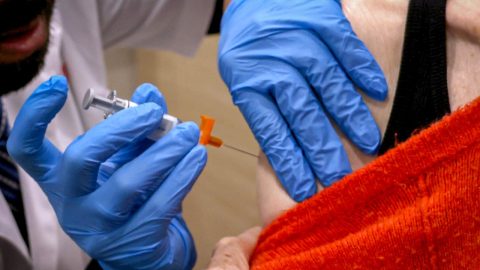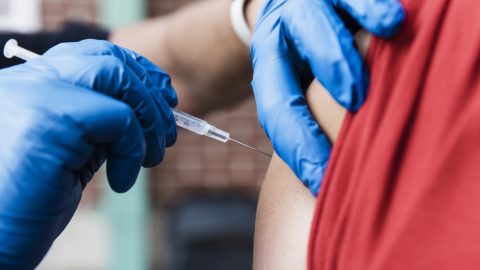
Plenty of research has linked regular exercise to a lower risk of cancer, but a new study suggests that getting into better shape could reduce the risk of prostate cancer in particular, a diagnosis that around 113 out of every 100,000 men get every year in the U.S.
The research, published Tuesday in the British Journal of Sports Medicine, showed that men whose cardiorespiratory fitness improved by 3% or more annually over three years, on average, were 35% less likely to develop prostate cancer than men whose cardiorespiratory fitness declined by 3% annually. That was true regardless of men’s fitness levels when they started out.
It’s evidence, in other words, that “no matter what age, no matter where you are in your life or your relative fitness, that if you improve your fitness, even by a relatively small amount, you may significantly decrease your risk of developing prostate cancer,” said Dr. William Oh, the chief medical officer of the Prostate Cancer Foundation, who wasn’t involved in the research.
Cardiorespiratory fitness is a measure of how well the heart and lungs deliver oxygen to the muscles during exercise.
For the study, researchers from the Swedish School of Sport and Health Sciences analyzed data from more than 57,000 men in Sweden who were enrolled in a health database as early as 1982. The men took at least two fitness tests, which involved pedaling on a stationary bike and measuring the volume of oxygen they used during vigorous exercise. A higher volume indicated a greater fitness level.
The tests were generally done years apart, though the exact interval varied by participant. The researchers then analyzed whether the men had developed prostate cancer after an average of seven years had passed since their last fitness tests.
The results indicated that men could decrease their risk of prostate cancer by improving their cardiorespiratory fitness through activities that elevate their heart rates, said a co-author of the study, Kate Bolam, a researcher at the Swedish School of Sport and Health Sciences.
“They want to aim for more vigorous intensity activities — that’s activities that we would do and we would struggle to maintain a conversation with a friend,” she said. “It could be line dancing if that gets your heart rate up and you think it’s fun and you’re going to do it regularly.”
Jogging, hiking or swimming are all good options, as well.
Before the new study, research had yielded mixed results about whether exercise decreased the risk of prostate cancer. Some studies even found that men with high fitness levels had a slightly increased risk of prostate cancer — but other factors may have skewed those results, said Dr. June Chan, a urology professor at the University of California, San Francisco.
“People who exercise more generally have other healthy lifestyle practices, which would include being screened for prostate cancer,” she said. “That could create this appearance of there being a positive association.”
However, when the Swedish researchers took into account men’s baseline levels of fitness at the time of their first tests, they found that only those with moderate fitness levels — not very high or low — saw a reduction in the risk of prostate cancer.
There may be two reasons for that, Bolam said: People who are very physically active may not get additional benefits from improving their cardiorespiratory fitness beyond a certain threshold. On the other end of the spectrum, people who don’t exercise may have other health conditions that raise their risk of prostate cancer, such as obesity, and relatively small improvements to their fitness may not be enough to lower that risk.
The researchers also didn’t find an association between changes in cardiorespiratory fitness and the risk of dying from prostate cancer. There may simply have been too few deaths in the study group to detect a link, they said.
Other studies have suggested that improving cardiorespiratory fitness lowers the risk of dying from cancer overall. A study last year found that at least 120 minutes of moderate exercise or at least 40 minutes of strenuous exercise per week reduced the overall risk of death among cancer patients. (The U.S. Department of Health and Human Services generally recommends 150 minutes of moderate physical activity per week, with muscle strengthening activities on at least two of those days.)
Chan’s past research also found that intense exercise improved outcomes in men already diagnosed with prostate cancer. A study in 2011 found that at least three hours per week of vigorous exercise could substantially improve survival rates. Another study the same year found that brisk walking could inhibit or delay cancer progression.
“It led us to have a hypothesis that something about getting your heart rate up is important,” she said. Although the exact mechanism linking exercise and cancer risk isn’t fully understood, it could be that physical activity can help with weight loss, improve the body’s response to insulin or reduce chronic inflammation.
Oh noted, though, that there are other risk factors for prostate cancer besides physical fitness.
“As much as a third of patients may have a true genetic risk, which means that the rest of the risk is probably related to lifestyle and environment,” he said. “People cannot control their genetic backgrounds, and often, we can’t control our environments as much as we’d like. The only thing we can really control is our lifestyle.”








Recent Comments